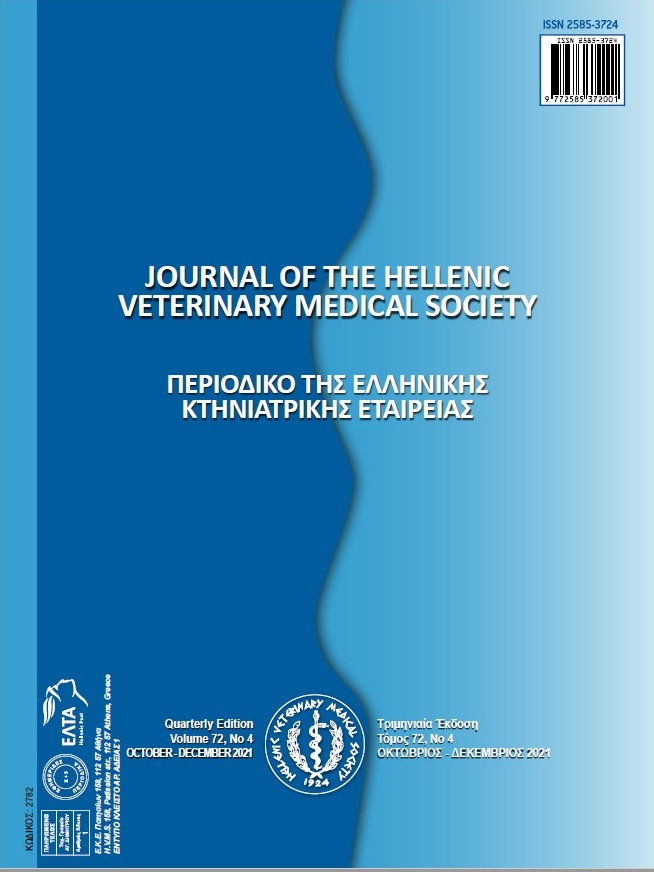Clinical and bacteriological analysis of respiratory tract infections in sheltered dogs and determination of antibacterial treatment options

Abstract
After canine infectious respiratory disease complex-CIRDC, only bacterial pneumonia or accompanied with CIRDC has a higher proportion in respiratory disease in stray dogs. Management of these respiratory problems in terms of both treatment and prevention in shelters has a big importance for animal welfare. With this purpose, the present study evaluates bacterial pneumonia in terms of clinical, bacteriological and the antibacterial treatment options in 100 sheltered dogs with respiratory tract infection symptoms. In all dogs, status of respiratory disease and treatment efficacy were evaluated by haematological analysis and clinical scores. Haematological analyses showed that all of the dogs suffered leucocytosis before treatment. Health status of all animals before, during and after treatment were evaluated according to nine clinical scores include clinical condition, body temperature, respiratory and heart rates per minutes, nasal discharge, tracheal sensitivity, mucous membranes, coughing, auscultation. For bacteriological analysis
and antimicrobial susceptibility tests, Bronchoalveolar lavage-BAL fluids were obtained from all dogs, twice. The bacterial agents isolated in the present study were Bordetella spp. (38.98%), Mycoplasma spp. (21.19%), Klebsiella spp. (16.10%), E. coli (5.93%), S. aureus (5.08%) and Pasteurella spp. (4.24%). Susceptibility tests were performed by using the disc diffusion method for Enrofloxacin (ENR), Trimethoprim/Sulpha (TS), Chloramphenicol (C), Amoxicillin clavulanate (AC), and Erythromycin (E) in all cases. Bordetella spp. isolated from 46 cases were found to be most susceptible to ENR (21/46 = 46%), TS (12/46 = 26%), and C (11/46 = 24%). Mycoplasma spp. were isolated from 25 cases and were found to be susceptible to C (14/25 = 56%), TS (8/25 = 32%), and ENR (3/25 = 12%). Klebsiella spp. were isolated from 19 cases and the antibiotics most effective were ascertained as C (9/19 = 47%), ENR (9/19 = 47%), and TS (1/19 = 5%).The results showed that clinical scores could be useful in the diagnosis and monitoring of respiratory tract diseases in sheltered dogs. Besides, in the light of the findings of presented study, enrofloxacin, chloramphenicol, and trimethoprim/sulpha were proven efficient against to bacterial isolates in sheltered dogs in the treatment of bacterial pneumonia. Antibacterial therapy should be conducted by antibiotic sensitivity test. But, in the cases this is not possible, antibiotic choice may contain enrofloxacin, trimethoprim/sulpha. If it is not forbidden to use for companion animals by administrations, chloramphenicol may also be thought as alternative.
Article Details
- How to Cite
-
KÖSE, S., MADEN, M., & SAYIN, Z. (2022). Clinical and bacteriological analysis of respiratory tract infections in sheltered dogs and determination of antibacterial treatment options. Journal of the Hellenic Veterinary Medical Society, 72(4), 3491–3502. https://doi.org/10.12681/jhvms.29441
- Issue
- Vol. 72 No. 4 (2021)
- Section
- Research Articles

This work is licensed under a Creative Commons Attribution-NonCommercial 4.0 International License.
Authors who publish with this journal agree to the following terms:
· Authors retain copyright and grant the journal right of first publication with the work simultaneously licensed under a Creative Commons Attribution Non-Commercial License that allows others to share the work with an acknowledgement of the work's authorship and initial publication in this journal.
· Authors are able to enter into separate, additional contractual arrangements for the non-exclusive distribution of the journal's published version of the work (e.g. post it to an institutional repository or publish it in a book), with an acknowledgement of its initial publication in this journal.
· Authors are permitted and encouraged to post their work online (preferably in institutional repositories or on their website) prior to and during the submission process, as it can lead to productive exchanges, as well as earlier and greater citation of published work.


